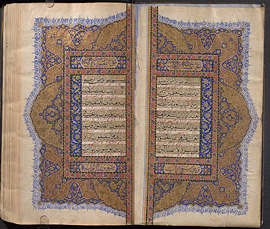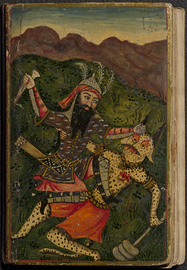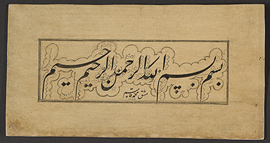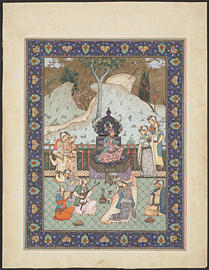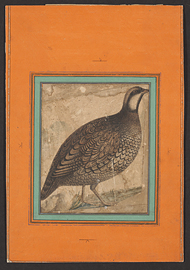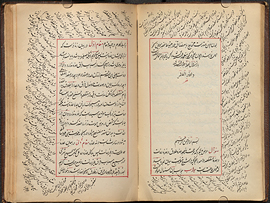The copying of manuscripts as well as their illumination and illustration continued in Persianate societies long after the introduction of European printing presses in the Middle East and South Asia. The first printed books in the Persian language and script appeared in the Netherlands in the 17th century CE. And, although the first book printed in Qajar Iran appeared in 1817 CE, in Iran—as elsewhere in the Islamic world—modern printed books were slow in catching on in popularity. Instead, lithography, which could more elegantly represent the flow of Persian calligraphy and illustration, became the modern printing method of choice from the mid 19th century to the early 20th. Nevertheless, hand-calligraphed and illuminated copies of beloved classics such as the Mas̲navī-i maʿnavī of the 13th-century mystical poet, Rūmī, remained highly sought-after items by eastern and western collectors alike. Lacquer painting, which had been introduced in Iran from China in the 14th century CE, had been developed and refined by artists over the centuries to produce the intricate and multicoloured pieces that survive to the present day. While the arts of the book under the Qajar Dynasty (1785 to 1925 CE) tended to follow the models of earlier centuries with varying degrees of success, the Qajars helped to renew interest in and sponsorship of the production of manuscripts and spurred a growing demand for portraiture.

